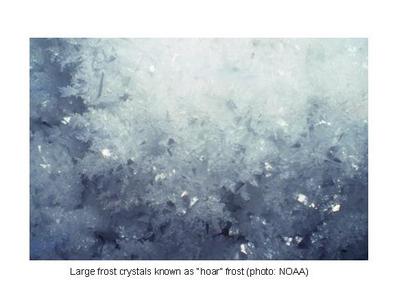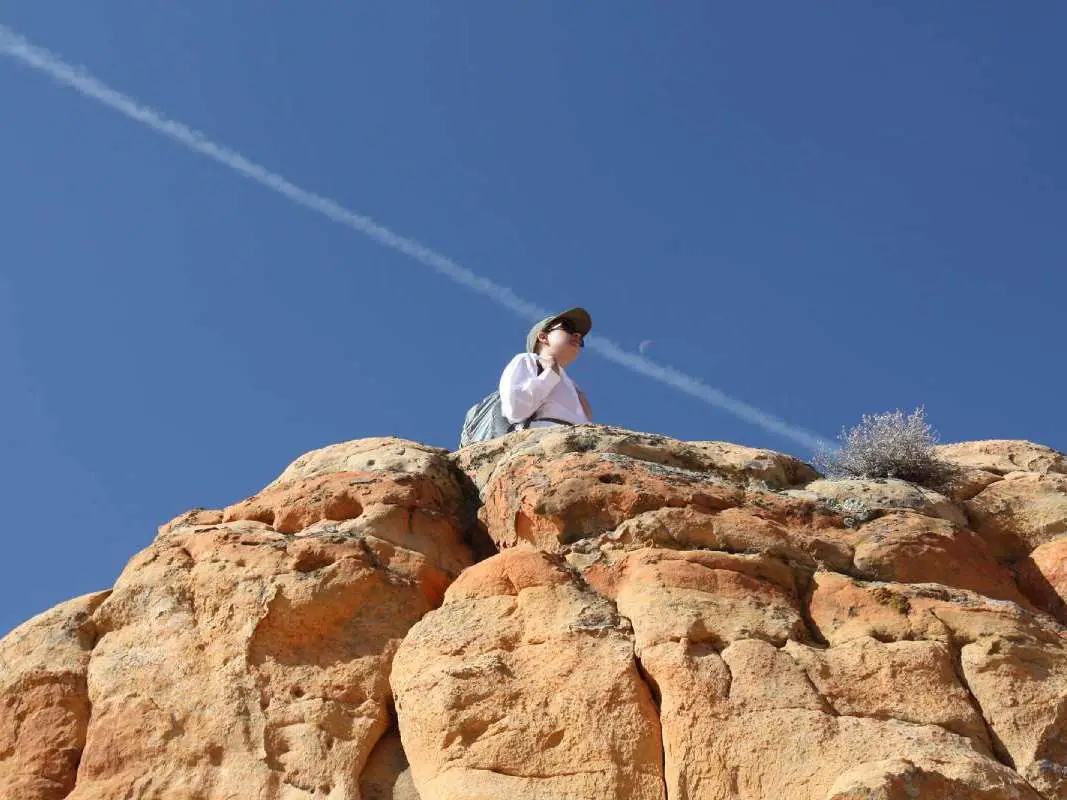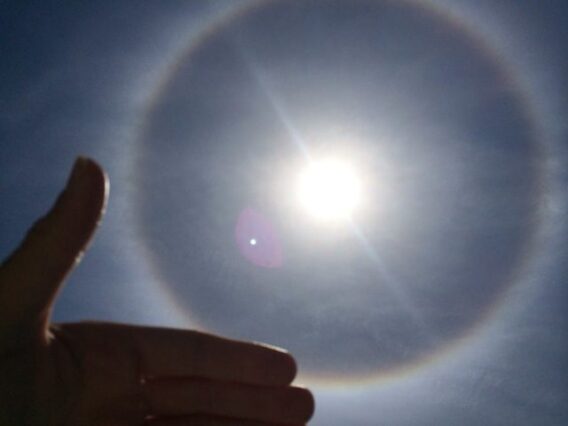Bright sunshine awakens you on a cold winter morning. There’s not a cloud in the sky. But as you look out the window, you see the ground, the trees, the cars – everything, covered with white.
It didn’t snow, so where did all that white stuff come from?
Hoar Frost, or sometimes Hoarfrost, can be a beautiful part of a cold winter morning.
It generally forms when the tree branches or the grass or your car has a temperature below the Dew Point (the temperature at which the air is 100% saturated – giving a relative humidity of 100%).
When air comes in contact with these very cold things, the water vapor can no longer remain “invisible.” If the temperature is above freezing, condensation takes place (water changes from a gas to a liquid) and dew forms. If the temperature is below freezing, the water vapor skips the gas to liquid transition and goes straight from gas to solid, a process called sublimation. That’s when we see hoarfrost.
The official definition of hoarfrost from the National Weather Service is:
“A deposit of interlocking crystals formed by direct sublimation on objects, usually those of small diameter freely exposed to the air, such as tree branches, plants, wires, poles, etc.”
The Opposite Of Hoar Frost
Incidentally, the process in reverse, solid to gas is also called sublimation. That happens when an icicle doesn’t melt, it just disappears. The ice sublimes. Like liquid water evaporates, or goes from liquid to gas, frozen water sublimes, or goes from solid to gas. It is strange to me that with liquid water we have two words, evaporation and condensation, to describe the two transitions. With frozen water, we have one word, sublimation, to describe both processes … vapor to solid and solid to vapor.
Maybe we should start a campaign to come up with a new word. Icimation or something. Any suggestions?
I’m a TV weatherman in south Texas. I get blamed for the bad weather, but I also get credit for the beautiful days. I absolutely love my job!





